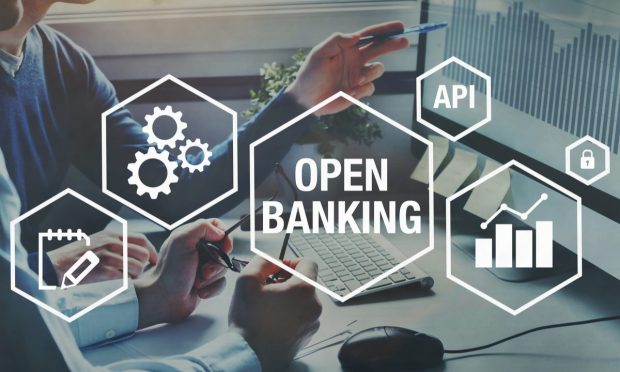State of Open Banking in Europe, Africa and the Middle East

Open Banking (OB) refers to the use of open-source technology and data-sharing in the delivery of financial services. The goals of a more open financial system are to improve the banking experience for customers, as well as to increase transparency and competitiveness in the banking sector.
Many of the central tenets of OB have their origins in the free-market economics and open-source software movement of the late twentieth century. But it was not until more recently that the market forces, political resolve, and technological advances needed to create today’s OB systems aligned.
Globally, the OB frameworks that first emerged in Europe are increasingly being transposed to Africa and the Middle East. In turn, the basic model has been adapted in these regions to better meet the needs of local markets and conform to their specific regulatory and business environments.
In what follows, we’ll look at how the emergent OB program has panned out so far in the EMEA sub-regions of Europe, the Middle East and North Africa (MENA) and Sub-Saharan Africa.
Europe
Europe is usually considered the birthplace of OB as we know it thanks to several landmark pieces of legislation: most notably, the revised EU Payment Services Directive (PSD2) which came into force in 2018.
Because it directs banks to share account details with third parties if requested by the account holder, PSD2 has been a major catalyst for change in the European financial sector, paving the way for a new generation of FinTech innovators.
Read more: Open Banking Bumpy but Adoption Curve Better Than Contactless Payments
In the 2010s, account-to-account initiatives like PSD2 allowed companies such as TrueLayer, Yapily and Tink to pioneer an approach to interbank connectivity centered on the free sharing of financial data through open APIs.
Related: UK’s CMA Clarifies Variable Recurring Payments to Foster OB
As European customers increasingly demand real-time payments, frictionless authentication and greater integration of their financial products, OB on the continent continues to grow.
Read also: Real-Time Demand Will Boost EU OB Payments, Says Worldpay EMEA GM
With many already looking towards the next stage of European OB, the API-based model of data sharing is being applied to a more extensive range of financial services. Beyond payments, as Europe’s OB ecosystem matures, the way people save, invest, and borrow is also set to benefit from access-to-account initiatives.
MENA
In the MENA region, large unbanked populations in countries like Morocco and Egypt mean that the room for growth in the OB sector is huge. Fast-track authentication, mobile accessibility and digital-first finance have the potential to bring a range of financial services to many people who have been excluded from traditional banking.
Having observed Europe and the U.S. as testing grounds for OB, in the MENA region, European-style regulator-driven approaches meet with American-style market-led initiatives. The result has been the rolling out of OB programs with impressive agility.
On the regulatory front, Bahrain and Israel have been the first countries in the region to pass OB legislation in 2020 and 2021 respectively. Not far behind them, Saudi Arabia is expected to roll out its own OB framework soon. In the UAE, regulators have taken a more light-touch approach so far, with authorities in Abu Dhabi and Dubai issuing guidance on API standards to encourage collaboration between banks and FinTechs.
Of course, even without access-to-account laws, many FinTechs and banks in the MENA region have stepped up to meet customer demand for OB services such as real-time payments and the innovative financial management products offered by third-party providers.
One noteworthy example is Tarabut Gateway. Thanks to a range of OB APIs, the platform is helping banks across MENA plug into the burgeoning OB ecosystem and realize the true value of their customer data in accordance with PSD2 and regional regulation.
More on this: Open Banking Firm Tarabut Gateway Partners With Four Saudi Banks
Sub-Saharan Africa
Home to some of the largest unbanked populations in the world, and with a far more diverse payments ecosystem than its EMEA neighbors to the north, sub-Saharan Africa presents some unique challenges but also opportunities for OB.
For example, although the adoption of traditional banking services is slow and has risen by only 4% since 2014, the share of people with a mobile money account has almost doubled in the same period.
See More: Africa’s Digital Future Beyond Mobile Money
Considering the significance of mobile money wallets as an alternative to bank accounts in the region, the phrase open banking takes on a different flavor. In the sub-Saharan context, there is less emphasis on access-to-account and a greater focus on open APIs that allow the integration of mobile money networks and financial institutions.
It’s exactly this philosophy of interoperability that has allowed companies like MFS Africa to connect over 400 million mobile money wallets by partnering with mobile wallet providers across the region.
Aside from the greater integration of mobile money schemes pioneered by the continent’s FinTechs, in terms of PSD2-style legislation, Nigeria recently joined Kenya in announcing OB guidelines. In May, the country’s central bank set forth proposed standards for how companies exchange customers’ financial data.
Further reading: MFS Africa CEO: Prepaid Cards Open World of Online Payments to Millions in Africa
Overall, from the open data platforms experimenting with novel use cases for access-to-account, to the trailblazing FinTechs using APIs to connect customers like never before, across the EMEA region open banking is changing the way people access and use financial services.
Sign up here for daily updates on all of PYMNTS’ Europe, Middle East, and Africa (EMEA) coverage.
